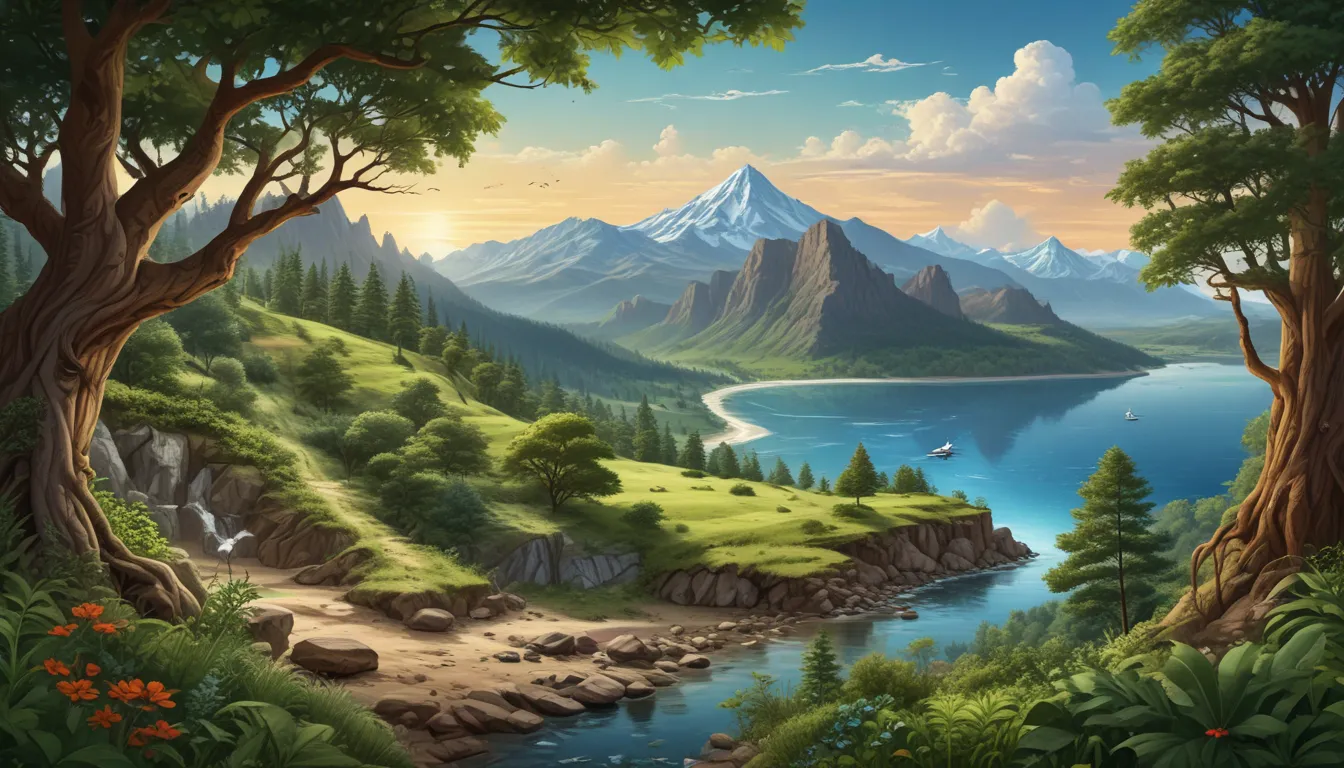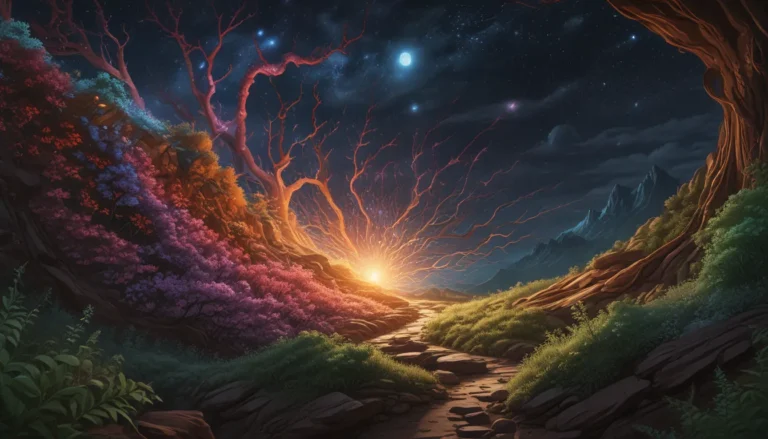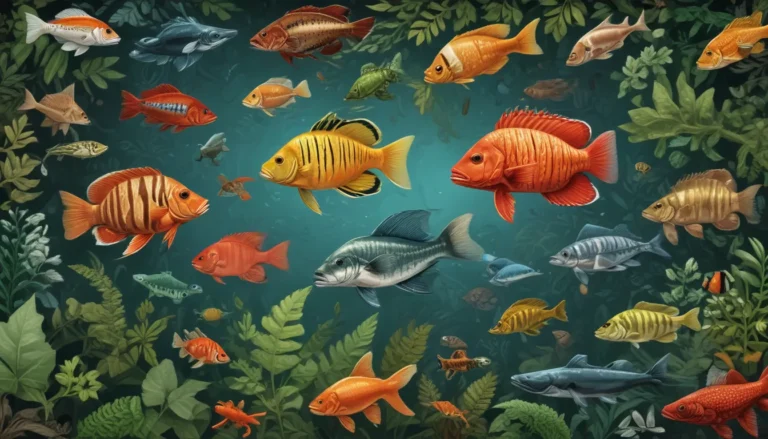A Note About Images: The images used in our articles are for illustration purposes only and may not exactly match the content. They are meant to engage readers, but the text should be relied upon for accurate information.
Welcome to the captivating world of biogeography, where the study of the distribution of living organisms unveils the interconnectedness of our natural world. From unraveling the mysteries of species dispersal to understanding the impact of environmental changes on biodiversity, biogeography offers a peek into the intricate relationships between organisms and their environments. Join us on a journey through diverse landscapes and unique adaptations that make our planet a truly remarkable place as we explore 11 astounding facts about biogeography.
Key Takeaways:
- Biogeography showcases the distribution of species across the planet, emphasizing the uniqueness of habitats and the interconnectedness of life on Earth.
- Understanding biogeography plays a crucial role in preserving Earth’s diverse ecosystems for the benefit of future generations.
The Wallace Line: Exploring the Boundary of Faunal Realms
Named after the naturalist Alfred Russel Wallace, the Wallace Line serves as a boundary that separates the distinct biogeographical regions of Asia and Australia. This line marks the transition point between two faunal realms, known as the Oriental realm and the Australian realm, offering insights into the unique biodiversity found in each region.
Endemic Species: Unveiling Nature’s Unique Treasures
Biogeography has unveiled the presence of numerous endemic species, exclusive to specific regions or habitats. These species are highly adapted to their environments, contributing significantly to the ecological balance of their ecosystems.
Island Biogeography: Nature’s Natural Laboratories
Islands serve as natural laboratories for studying biogeography, with the theory of island biogeography explaining how factors such as island size and distance from the mainland impact biodiversity. This theory, developed by Robert MacArthur and E. O. Wilson, sheds light on species colonization and diversity patterns on islands.
Pangea and Continental Drift: The Influence of Ancient Supercontinents
The breakup of the supercontinent Pangea millions of years ago has significantly influenced biogeographical patterns by geographically isolating species. This separation led to the evolution of unique flora and fauna in different regions, shaping the biodiversity we see today.
Biodiversity Hotspots: Preserving Nature’s Riches
Biogeography helps identify biodiversity hotspots, areas with exceptionally high species richness and endemism. These hotspots play a crucial role in conservation efforts, housing a significant portion of Earth’s biodiversity that must be protected for future generations.
Species Dispersal: Understanding Nature’s Wanderers
Biogeography explores how species disperse and colonize new habitats through mechanisms such as migration, range expansion, and adaptation. These processes allow species to overcome geographical barriers and establish populations in new areas, showcasing the resilience of life on Earth.
Biogeographical Realms: Diverse Divisions of Life
Biogeographical realms are large-scale divisions of Earth’s surface based on unique plant and animal assemblages. From the Neotropical to the Australasian realm, each realm boasts distinctive biogeographical features that contribute to the richness of life on our planet.
Mass Extinctions: Shaping Biogeographical Patterns
Throughout Earth’s history, mass extinctions have reshuffled species and led to the emergence of new biogeographical patterns. Events such as the Permian-Triassic and Cretaceous-Paleogene extinctions have had a profound impact on the distribution of life on our planet.
Climate Change and Biogeography: Adapting to a Changing World
Climate change poses significant implications for biogeography, forcing species to migrate or face extinction as temperatures and precipitation patterns shift. Understanding how species respond to changing environments is essential for preserving biodiversity in a rapidly changing world.
Dispersal Limitation: Nature’s Geographic Barriers
Dispersal limitation refers to the inability of certain species to colonize specific areas due to geographical barriers or ecological constraints. This phenomenon shapes biogeographical patterns, highlighting the importance of understanding the factors influencing species distribution.
Biogeography and Conservation: Protecting Earth’s Biodiversity
Biogeography provides valuable insights for conservation efforts by understanding species distribution and the factors influencing their survival. By prioritizing protection in key areas, scientists and policymakers can develop effective strategies to preserve Earth’s diverse ecosystems for future generations.
Venture deeper into the enthralling world of biogeography and uncover more surprising facts that showcase the incredible diversity of nature. Evolutionary biogeography holds astonishing revelations about how life has adapted and evolved over time, offering a deeper appreciation for the wonders of our natural world.
FAQs:
Q: What is biogeography?
A: Biogeography is the study of the distribution of plants, animals, and other organisms across space and time, uncovering the patterns and processes that shape life on Earth.
Q: How does biogeography contribute to our understanding of evolution?
A: Biogeography plays a crucial role in tracing the evolutionary history of species, understanding their adaptations to different environments, and uncovering the mechanisms driving speciation.
Q: What are biodiversity hotspots?
A: Biodiversity hotspots are regions with high species richness and endemism, crucial for conservation efforts due to their unique and vulnerable ecosystems.
Q: How does continental drift influence biogeography?
A: Continental drift, the movement of Earth’s continents, has shaped biogeography by creating and separating land masses, influencing species dispersal, and determining biodiversity distribution.
Q: How can biogeography inform conservation efforts?
A: By understanding species distribution and vulnerability, biogeography provides insights to prioritize conservation efforts, develop management strategies, and mitigate human impacts on biodiversity.
As we continue to unravel the mysteries of biogeography, we gain a deeper understanding of the interconnectedness of life on our planet. Through exploration and conservation efforts, we can preserve Earth’s biogeographical treasures for generations to come, ensuring the protection of our natural world’s diversity and beauty.






